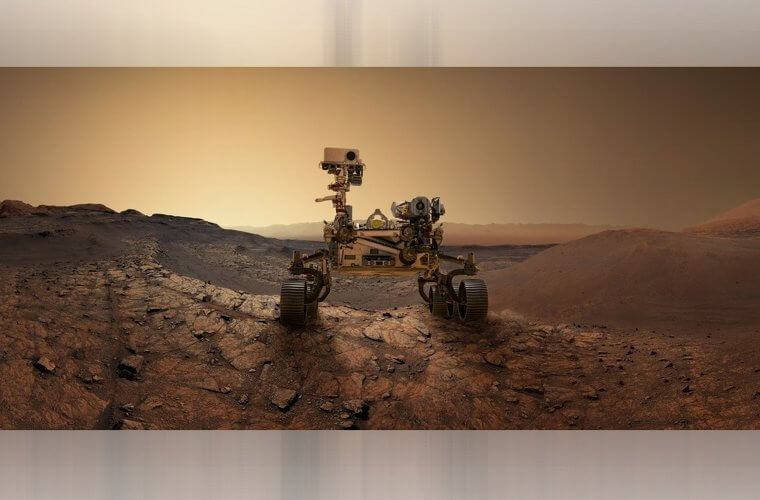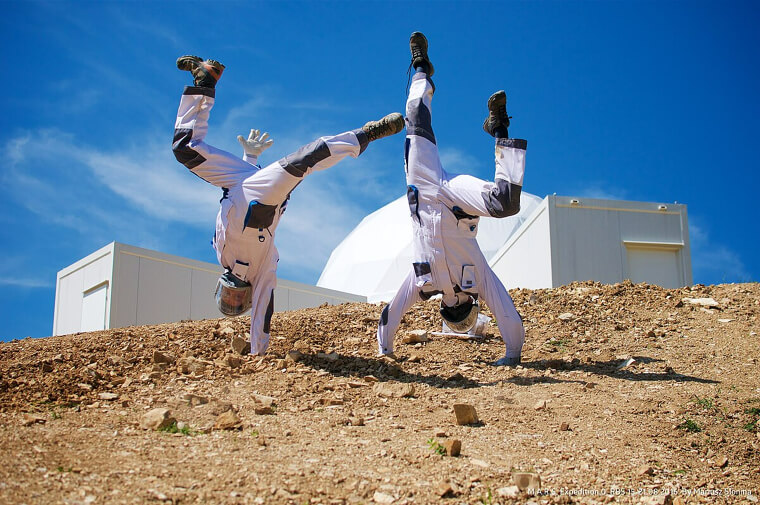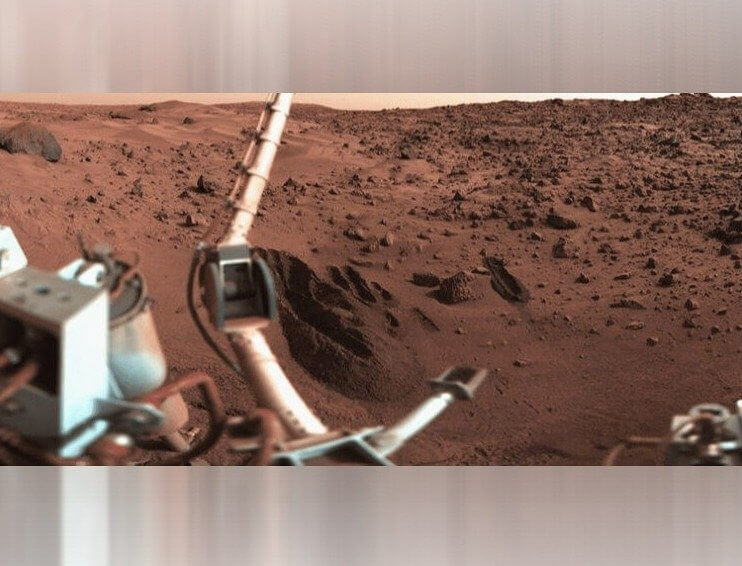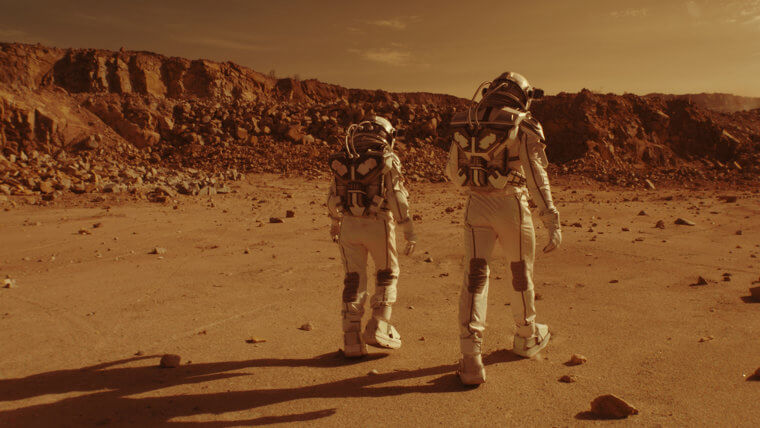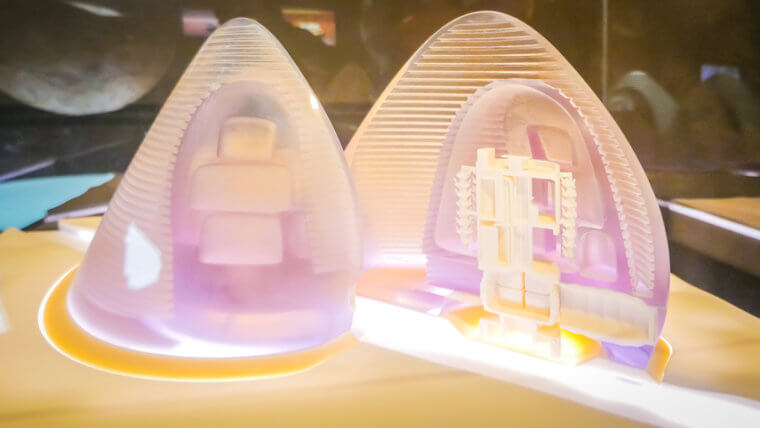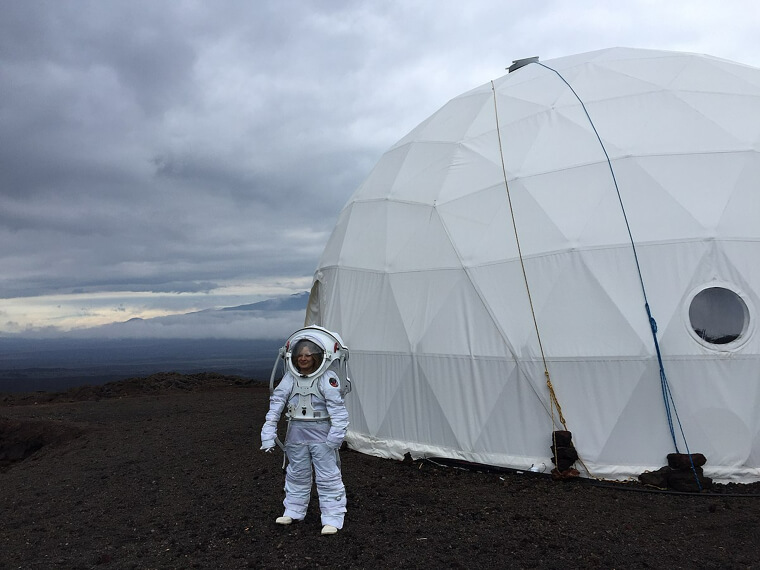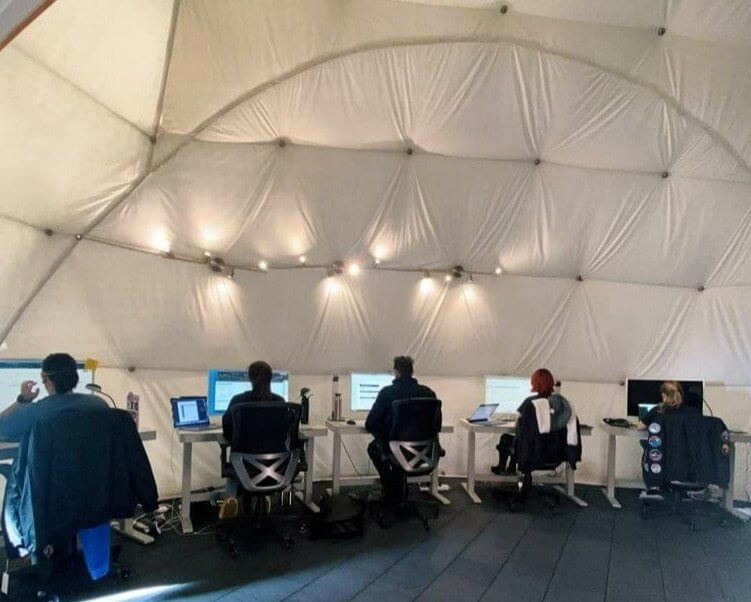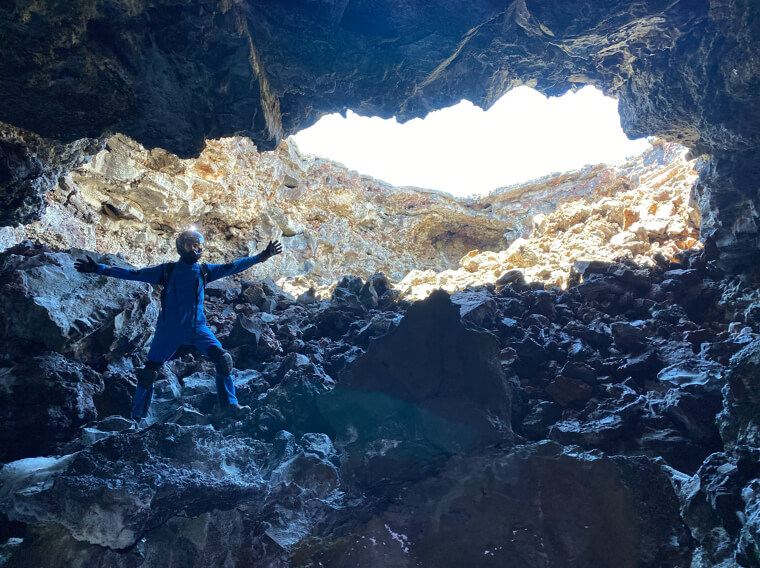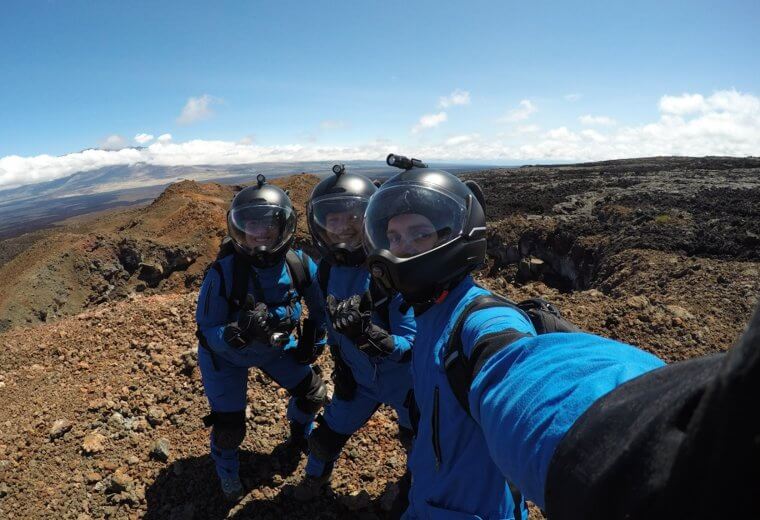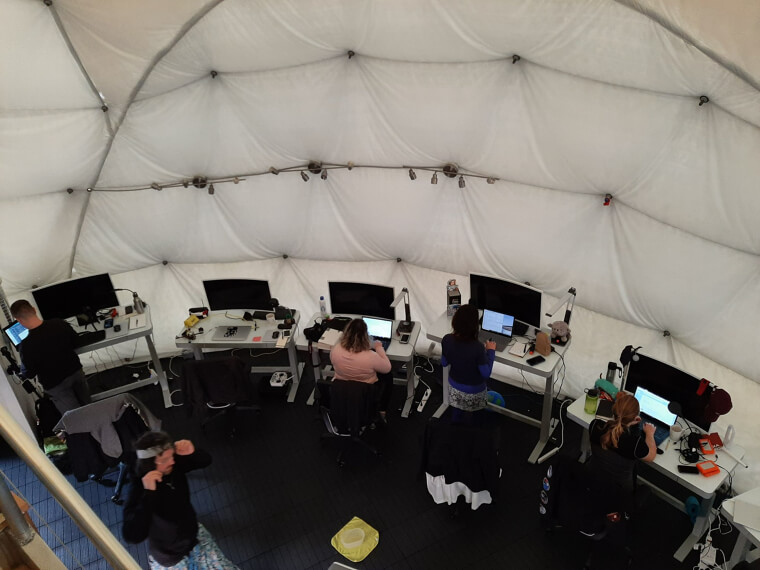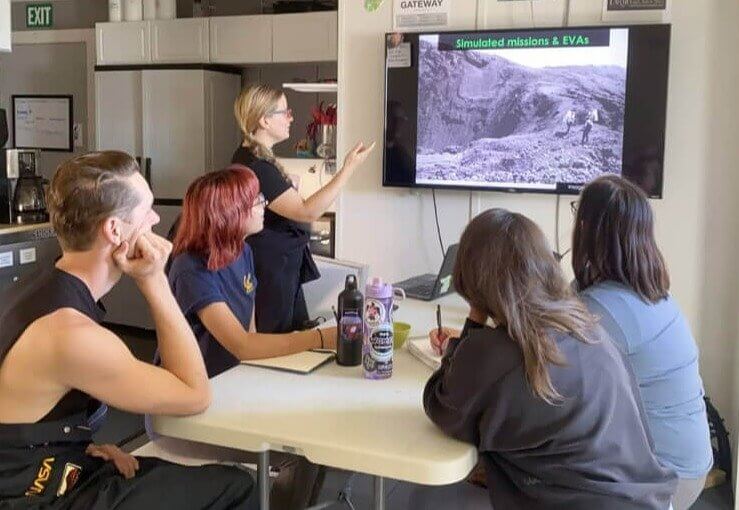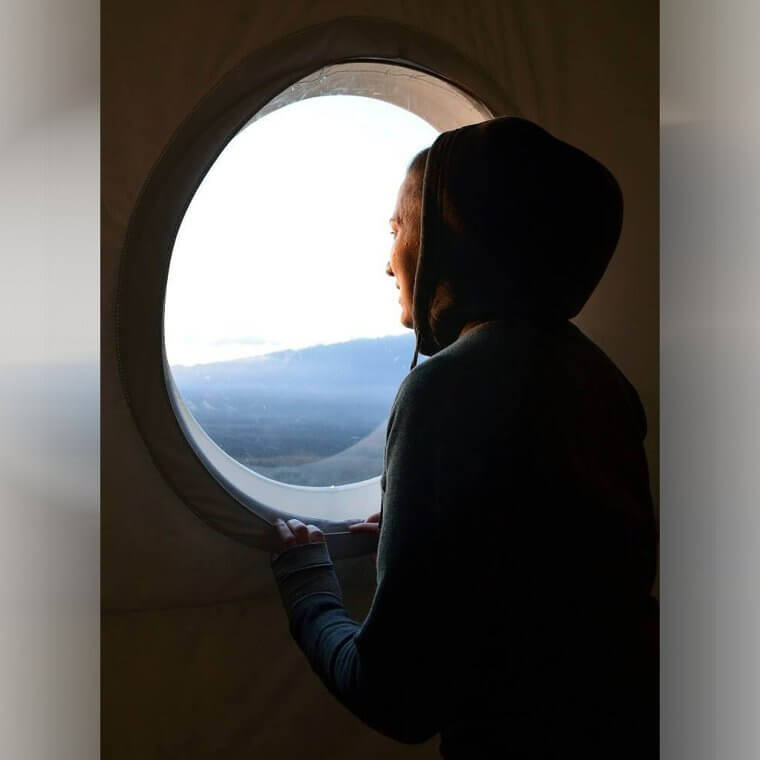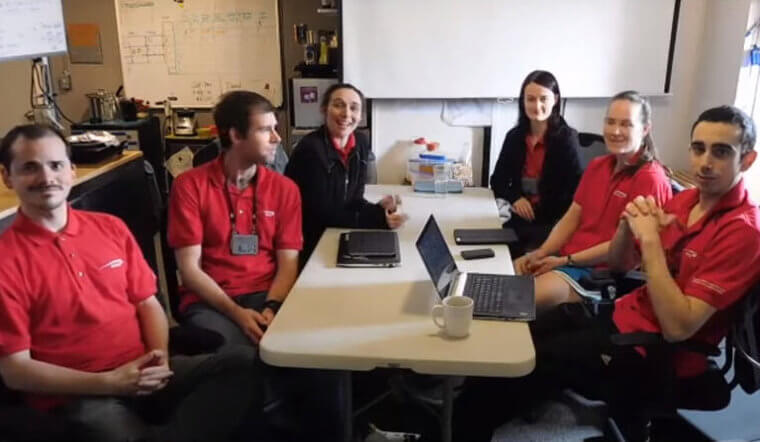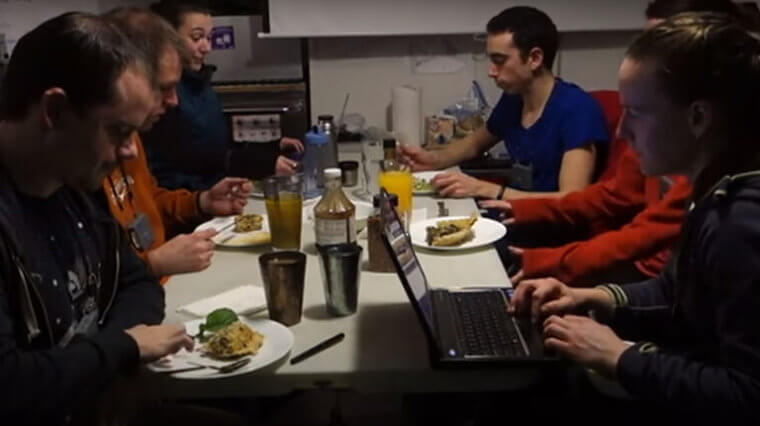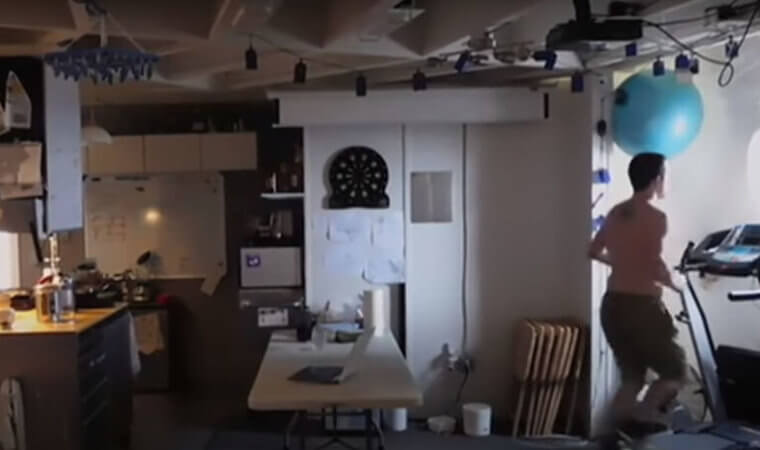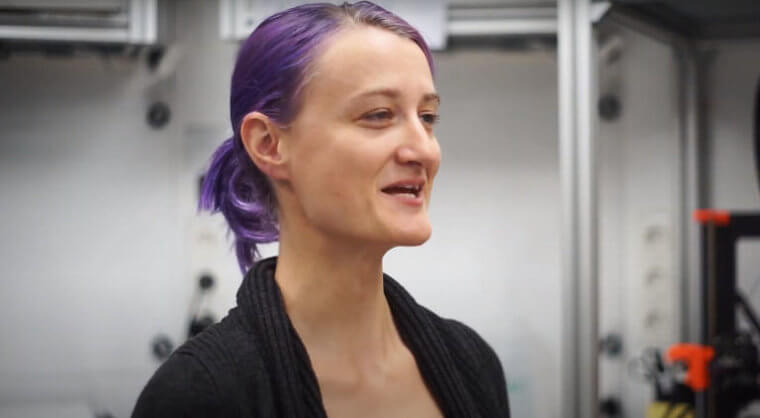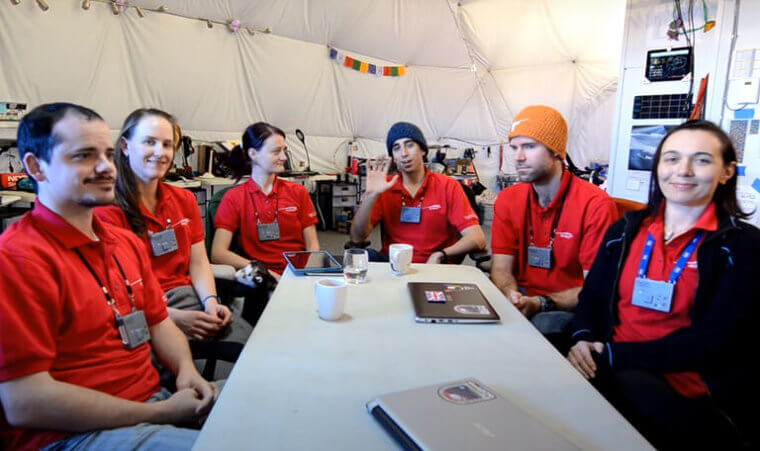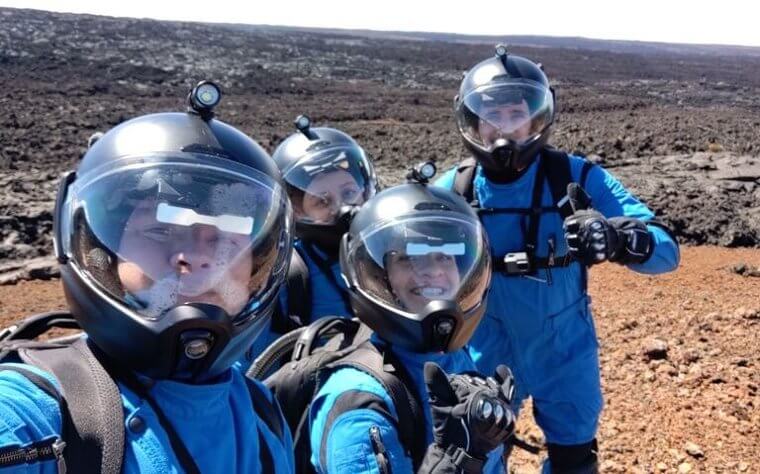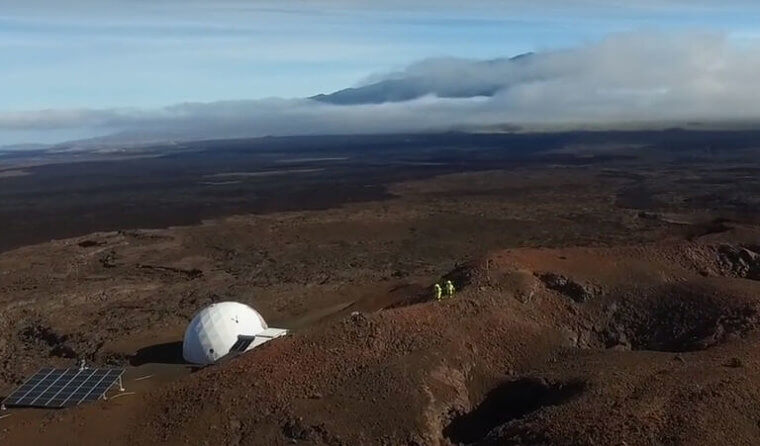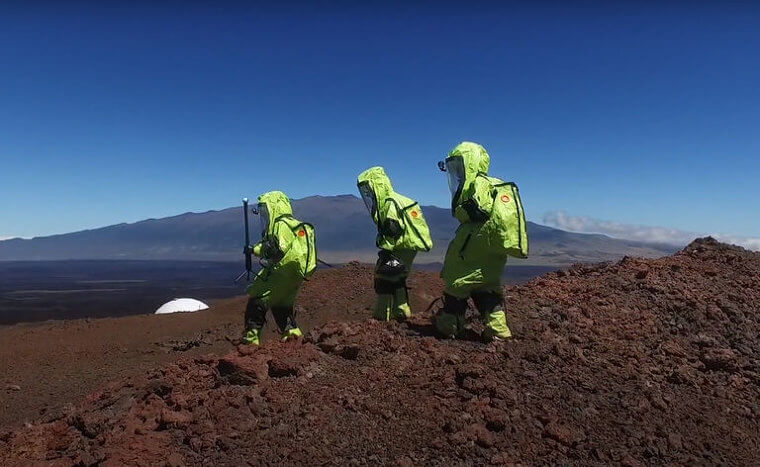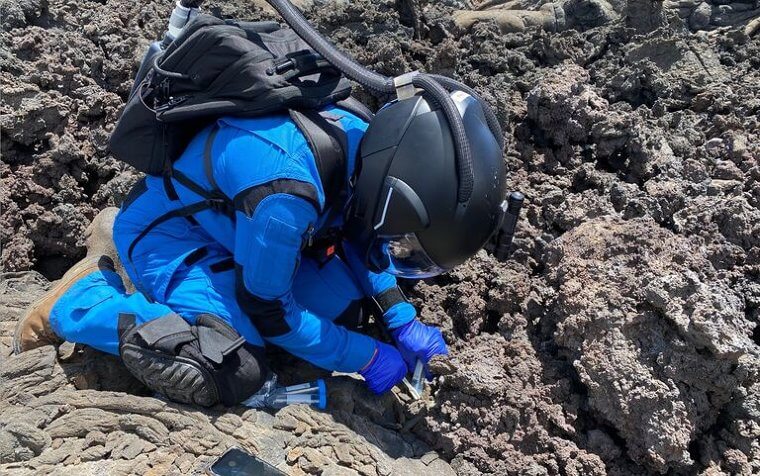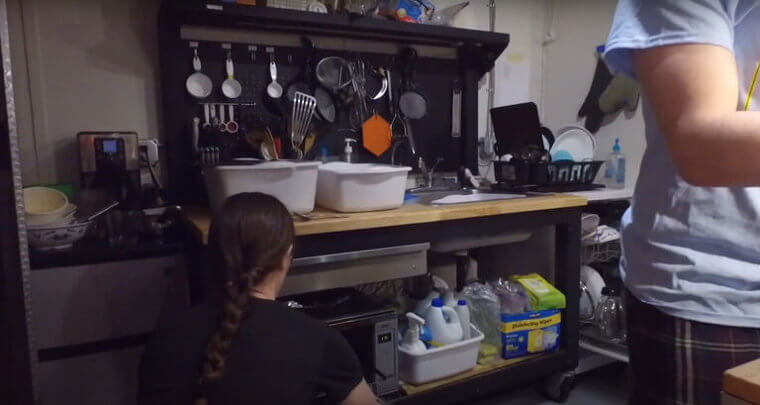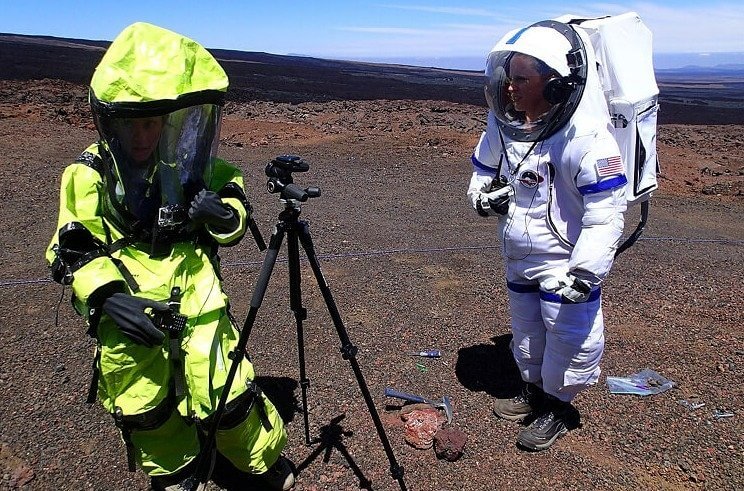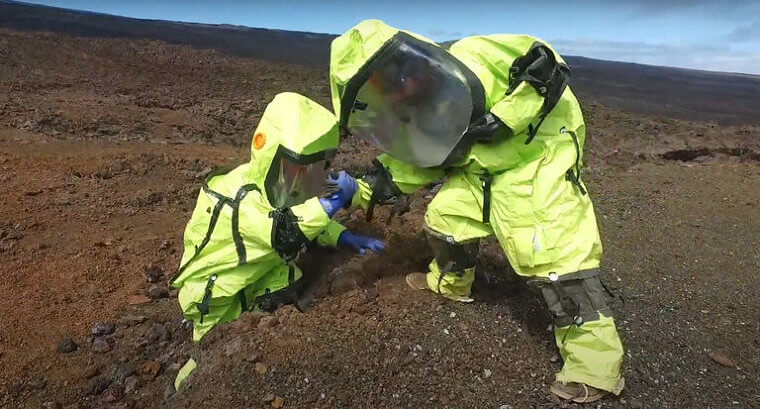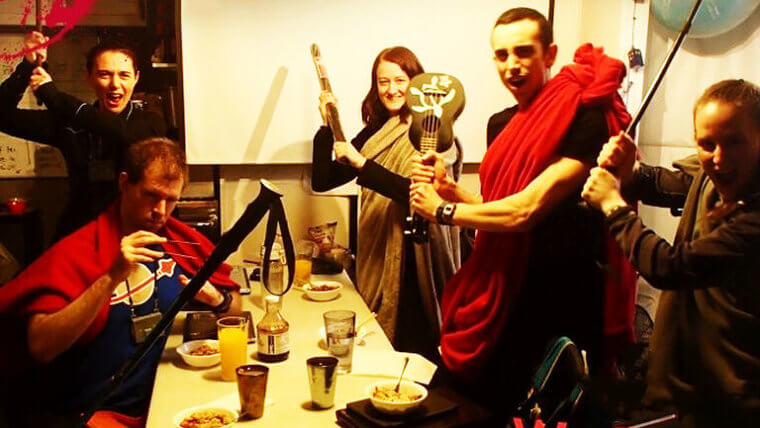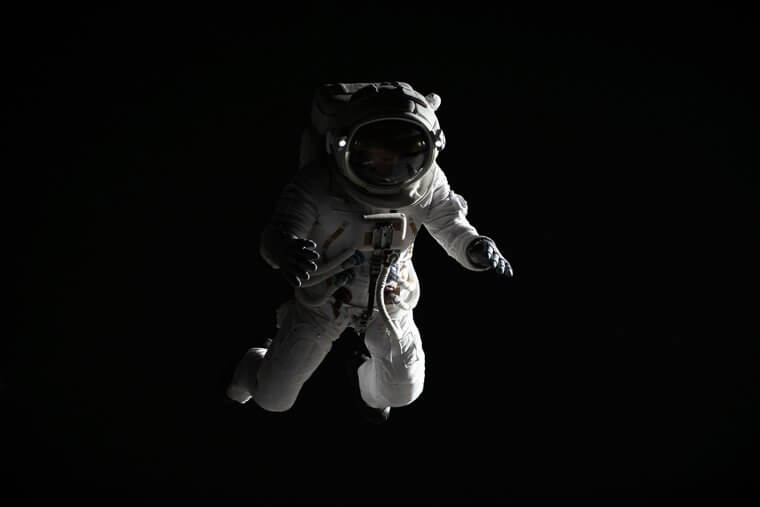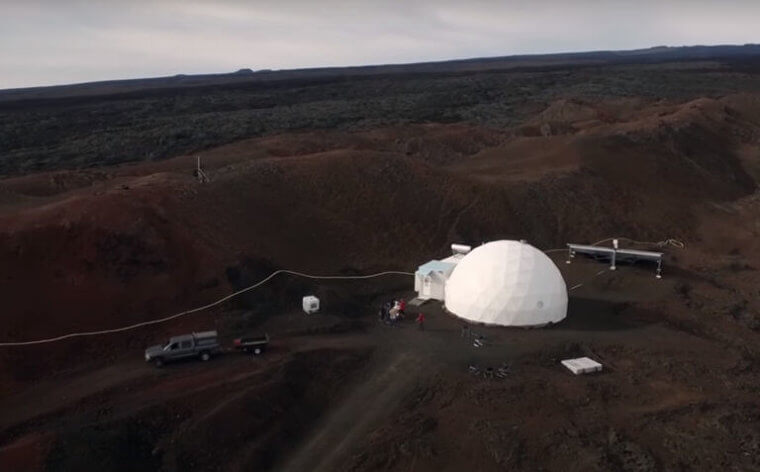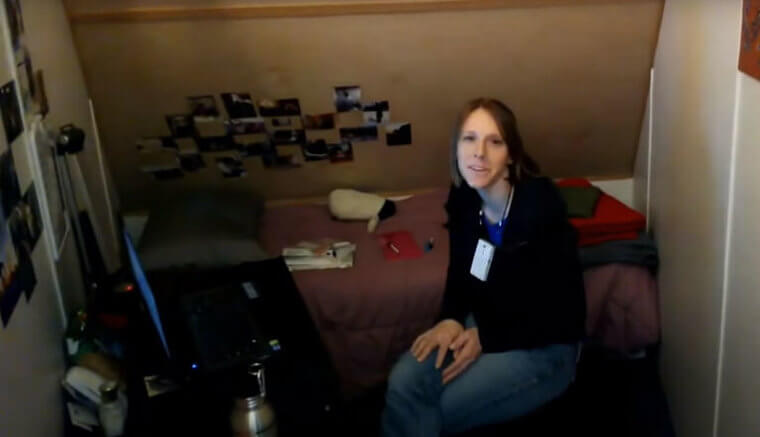The Start of the Mars Experiment
Although it would certainly be more interesting to do a study where scientists actually moved to Mars and they were able to gauge what life would be like there, it doesn't seem that mankind is quite there yet. So, instead, a group of six researchers from NASA decided to create a realistic simulation where they would be able to see what life would be like for humans living on Mars.
They went to the island of Hawaii and began to set up everything that they would need for this experiment and study. Next, they just needed to find some participants.
NASA's Set Up to Live on Mars
If you thought it would be easy to set up an entire simulation of what life would be like on Mars, you would be wrong. It took NASA a few decades to work out the details and the technology that they would need in order to create the simulation that would be "life on Mars." They created something called HI-SEAS habitat, which was located on Mauna Loa in Hawaii.
Although they had set up the perfect environment to figure out what life would be like on Mars, there was one thing that they still didn't know: how it would affect the people living there.
Life for Six People in Closed Quarters
Perhaps the biggest concern, even above how they would eat, do their cleaning, and survive, was how the people would react and respond to being in such close quarters for such a long period of time. After all, twelve months is not a short period of time for a group of strangers to be forced to live together. It is almost like a reality TV show and also a study of human behavior.
You might have thought that the biggest challenges would be basic ones about food and general survival, but the actual biggest challenges that they faced might come as a surprise.
Understanding and Exploring Mars Before the Test
People probably thought that in 1976, when Viking 1 landed successfully on Mars, it would only be a short matter of time before the planet was inhabited by humans. Or maybe if it wasn't inhabited just yet, people would at least be able to visit it. Unfortunately, that hasn't really been the case, and mankind is still quite far from being able to live on Mars or even visit it.
At least with this study and simulation, they will be able to get a bit closer to understanding what is required for humans to actually live on Mars or visit it.
Apollo 11 Vs Viking 1
Although astronauts have made it to the moon in the famous Apollo 11 landing, the same cannot yet be said for Mars. Viking 1 did make a landing there. However, the conditions and the background of the two missions were very different, starting with the fact that no human was traveling on Viking 1. It makes sense, though, since the moon and Mars are quite far apart from each other. The moon is a lot closer to Earth than Mars, so that has to be taken into account.
It only took the astronauts around eight days to make it to the moon, but it would take them around seven months to do the same journey to Mars.
A Trip to Mars Is Currently a One-Way Ticket
You probably never stopped to think and consider that although scientists have essentially confirmed that people can reach Mars, that is only a one-way journey. They still do not know a way that they could get people back from Mars. That is why they are thinking of colonizing the planet rather than just visiting it. There probably aren't many people who would be willing to fly to Mars knowing that they could never come back.
This just shows why it is even more important for NASA to study life on Mars and make sure that anyone who is sent there is fully prepared for what it will take.
Mars Is Great - Except for the Deadly Radiation and Freezing Cold
If you thought Antarctica was cold, you have a bit of a surprise coming when you see and feel the temperatures of Mars. It's so cold there that it's hard to fathom. Temperatures average at -81 degrees Fahrenheit but can drop as low as -220 degrees Fahrenheit. If that doesn't sound like less-than-ideal living conditions, then just add in some deadly radiation, and you will be sure never to want to go to Mars.
As a result, anyone who actually was to go and try to live on Mars would have to essentially live in a carefully controlled habitat. It's not really the life on Mars that you would expect.
Life on Mars Would Be Very Codependent
Forget the fact that everyone in the world is leaning towards becoming more and more independent as the years go on. Anyone who chooses to go to Mars would have to live the exact opposite life. As the conditions are not actually suitable for anyone to live there naturally just yet, anyone who went there would be very dependent on the other astronauts living on Mars for their survival in day-to-day life.
That is one of the main reasons that scientists believe that although people would face physical challenges on Mars, they would also face lots of psychological challenges of being in such close and dependent quarters with everyone else.
The Latest Race to Space
It's funny to think that so many years have gone by since people have landed on the moon, and yet they have not yet been able to find a way to land humans on Mars. You would think that, due to the vast amount of cultural references that are made about Mars and living on Mars, someone would have at least made contact with the planet. That is not the case, although there are many people trying, including NASA and multiple other private organizations.
People are too busy researching the logistics behind making this happen, and they have way too many unanswered questions. It is not yet safe enough to send people to Mars until they can get answers to certain questions.
Space Simulations in Hawaii
Although many people think that NASA isn't really making any real steps toward figuring out how it would be possible for people to live on Mars, that is not exactly true. It may seem like years have gone by without any real progress, but that is exactly why they came up with this analog and simulation on Hawaii that will make huge strides in the efforts to get some astronauts on Mars.
Before they can even think about sending people that far into space, they have to make sure that everything is prepared and that the people themselves are prepared mentally and psychically.
A Little Bit About HI-SEAS
In order to learn about what life would be like on Mars and how people would react to this life, NASA had to create their own little Mars-like world on Earth. That is why they built the Hawaii Space Exploration Analog and Simulation, also known as HI-SEAS. They chose the Mauna Loa volcano in Hawaii for this. After all, with just one glance at the landscape, you can probably understand why this is the place they chose.
This was built in 2013, and it covers an area of about 1000 square feet. It is also located about 8,200 feet above sea level. That is the closest they can get to Mars on Earth.
Life Inside HI-SEAS Is Crowded
Although it may sound like a fairly big space, it is actually quite small when you think about how many people will have to live there together. On the one hand, it is well equipped and covers two whole levels. There is a communal space on the ground floor, including a kitchen, laboratory, bathroom, dining room, and exercise zone, along with living spaces and bedrooms on the second floor for each individual.
The place was built to house six residents and people participating in the study. Although there is technically enough room for that many people, it is closed quarters when it comes to long periods of time.
A Terrain That Is as Close to Mars as Earthly Possible
Although it's definitely not possible to create a place on Earth that is exactly as it would be on Mars (makes sense, no?), the scientists of NASA have managed to get something as close as possible for the people who would be partaking in this study. All of the "astronauts" have to exit HI-SEAS via a simulated airlock, just as they would have to do if they wanted to exit and explore Mars.
This allows everyone to get a better idea of what the reality would be for people who are going to Mars. They can see how and what they would be able to explore.
Isolated From Most Communication Streams
NASA wanted to make this experiment and study realistic and, so they took it all the way. That would include limiting how much communication the team of participants would have with the outside world. After all, there is no real way to communicate from Mars. They were quite lenient about the communications as well and only implemented a 20-minute email delay and no real access to the internet and phones.
It may seem a little bit extreme for the six people who would be participating in this study; however, that is exactly what is needed for the astronauts who will actually go to space one day, so that is what needs to be done.
And the Experiment Begins
August 28, 2015, marks the start of the biggest experiment that NASA has ever attempted in order to better understand what life would be like for people on Mars. Until then, little was known of survival techniques and what could be done, but that was all about to change. Twelve months later, NASA would have a much better understanding of how people would react to life on Mars and what they can do to improve that.
Six scientists are the ones that have been chosen for this task. They are ready to take on all the challenges and learn in the process how to take a step towards life on Mars.
Quarantine of a Different Kind
In 2020, people all around the world learned what life would be like in quarantine. It was a pretty foreign concept to most people before that, but unfortunately, now the majority of the world knows what it is like. Although the people involved in the Mars simulation weren't trying to escape a world pandemic, they were isolating themselves from the entire outside world for a period of 12 months. Just as during Covid, they started to work on hobbies and activities during the days.
They continued on with daily life in the meantime as well, cooking, cleaning, and doing the dishes. Their lives were just different now than before.
Comforts Are Very Limited in Daily Life
Since the people in this study are essentially living in a safe space and a regulated area, it would make sense that their access to the simple comforts of life would be limited. Although they do have basic facilities and what is needed to eat, drink, shower, etc, they are far from luxurious. Most of the meals that they had to eat were freeze-dried, and they hardly ever saw a fresh vegetable.
Water was also very strictly regulated as they didn't want to use up their entire source of water in too short of an amount of time. They also could only have a certain amount of hot water each day.
How They Keep Busy During Their Free Time
If there is one thing that the people in HI-SEAS had, it is free time. They were essentially locked up in a small place for twelve months on end, so it makes sense that they would struggle to find ways to keep themselves busy. While some took turns exercising on the one treadmill that was in place for everyone to use, others walked around with heavy packs just to exercise a bit.
Tristan Bassingthwaighte, one of the participants, used the time to start a business for designing t-shirts. At least he was working on being productive with all that free time.
When It Was Time to Leave HI-SEAS
It comes as no surprise that things were a bit difficult by the time the end of the simulation came around. All of the scientists survived, but they did leave with a few issues that might come with them throughout the years. The overall living conditions and the isolation were some of the issues and the psychological factors that went along with that, but there were many other issues as well.
Imagine being locked up in one place for 12 months with a bunch of complete strangers. It wouldn't be any surprise that things would get a little crazy and messed up.
The One Thing That Pushed Everyone Over the Edge
Many people thought that the first thing that would push everyone over the edge in this experiment would be the isolation and, essentially, the lack of human contact. However, the exact opposite was the case. It was actually the presence of human contact and the lack of privacy that really pushed people over the edge. There was no way to soundproof any of the walls, and it was essentially like living in one communal space.
They also had to make the best of living with six complete strangers for twelve months on end. It makes sense that they almost wanted to kill each other at times.
Taking Scientists From All Around the Globe
To further add to some of the difficulties, they also decided to take people from all around the world for this experiment. They had to deal with all of the difficulties that people who come from similar backgrounds would deal with, but then they also had to struggle with culture clashes. Four of the scientists were from the US, different parts of course, and two of the scientists came from Europe.
There were astrobiologists (Cyprien Verseux) and geophysicists (Christiane Heinicke), along with other types of scientists. Maybe they just wanted to make things a little bit more interesting by diversifying the backgrounds of the participants.
The Experiment Was Extremely Draining for Those Involved
Although four of the participants were Americans, they came from very different backgrounds. Two of them, Carmel Johnston (a social researcher) and Bassingthwaighte (a space architect), were studying in China before they came to the US in order to participate in NASA's Mars program. The last two were Andrzej Stewart, who was an engineer, and Sheyna Gifford, a doctor. They were diverse but similar all at the same time.
The people in charge of this program were really just hoping for the best when they joined all of these people together. Maybe they weren't ready for the real results that were to come.
Psychological Screening Before Starting the Experiment
Based on what they thought the conditions would be like in HI-SEAS, it would make sense that they wanted to ensure that everyone who was going to participate would be mentally able to partake in the task, along with being physically capable. Besides the stress of being in close quarters with a lot of strangers, they needed to make sure that they would mentally be able to survive the boredom.
All of the participants who were chosen passed the psychological test, so you can know that their responses were on the better side of how some people would have responded in similar circumstances.
Ready to Endure All of the Stress
They did everything they could to prepare the scientists for the high levels of stress that they would encounter as a part of NASA's HI-SEAS program. Some of the participants were even a little scared that they might not be able to actually withstand the stress and the pressures that the experiment would entail. They didn't know exactly what kind of stresses would be the ones that bothered them the most.
Each person reacts differently to different types of stress, so it makes sense that no one really knew what to do and how each person would respond in different situations.
It Was All Very Friendly at First
During the first few days and a few months of the experiment, things were actually going quite well for the scientists. They were friendly and enjoying each other's company. However, it didn't take that much time for things to deteriorate pretty quickly. It makes sense, though, as everyone knows that people struggle to get along, especially when forced into such small quarters for such long periods of time without escape.
It made even more sense when you took into account that these people all came from different perspectives and all had different priorities and expectations in day-to-day life.
Everyone Got Along - Until They Didn't
Obviously, everything was being pretty carefully monitored throughout; that is the purpose of an experiment, after all. In the beginning, they took surveys of the participants, and it was pretty unanimous that everyone was getting along quite well with each other. They wanted to make for a pleasant experience, so they were all putting their best effort into things going smoothly and taking everyone's feelings and thoughts into perspective.
It was also interesting to see how quickly things changed and went from being civil and pleasant to something that was quite different. The friendliness didn't last for long.
Everyone Took a Side
Who would have thought when NASA started this simulation to try to figure out if it was possible for people to live on Mars that they would also be doing a social experiment at the same time? Looks like they were able to kill two birds with one stone. While NASA thought they were just getting information to help better life on Mars for future astronauts, they also learned a decent amount about human behavior.
It didn't take that much time for everyone to let their guard down and start to show the real version of themselves. Slowly, the group divided into two opposing groups.
Different People With Different Perspectives
You can't expect everyone to react the same way when they are presented with different challenges. Some people in this experiment, like Bassingthwaighte, Johnston, Heinicke, and Verseux, thought that all the free time they had while being in HI-SEAS should be spent taking walks outside when they were allowed to. The others, especially Stewart and Gifford, didn't want to venture outside unless it was absolutely necessary and essential.
This divided the group pretty much into those who were strict and those who were not. Once the divide was made, it was hard for things to be overcome.
They Soon Formed Two Tribes
What started out just as two divided groups quickly turned into what was essentially two different tribes. It was interesting to see the tribal pattern come out so quickly and strongly with these people, but it was also very clear. It wasn't like a high school clique; they created their own tribes with their own rules and really only spent their time with the other people in their "tribe."
It took just about six months to get to this point and for the people to divide so strongly. Once they reached that point, things deteriorated even faster and rapidly.
It Always Follows the Four Quarter Structure
They even had a filmmaker who documented the entire HI-SEAS IV experiment. After all, it was a pretty big experiment that would show a lot about what would be possible when it came to life on Mars, so it makes sense that they have someone to document the process. She said that the participants followed the classic four-quarter structure. Things start to get bad by the time they reach the third quarter.
The third quarter is when everything starts to bother everyone. Essentially, no one can do right and everything becomes a problem pretty quickly. That is exactly what happened to everyone in this group.
Everyone Has an Annoying Habit
It's no surprise that these people started to nitpick all the annoying habits of everyone else who was around them. Just living with one partner causes enough annoyance for people; can you imagine that, but with five strangers? They started to lose patience for little things like leaving dirty dishes around the facility or playing music too loudly. It only took the small things to push people over the edge.
Johnston apparently had the annoying habitat of stomping up the stairs, while Stewart would use up too much water and not be considerate of the other participants' needs.
Power Clashes Among the Group
Besides all of the little issues that would come up on the day-to-day regarding the annoying habits that all of the participants would have, sometimes real problems would actually arise. At that point, tensions really became strong as they struggled to find an agreement that everyone was ok with. Some people tried to take the lead and essentially govern the situation, but they still had a hard time resolving issues.
Things weren't quite as bad on the daily as they are being made to seem here. Most days went pretty smoothly. However, there were definitely some issues between all the people.
Compromising on HI-SEAS IV
Compromise is hard enough for most people to do even under the best of circumstances, so you can only imagine how hard it was for people to accomplish the nearly impossible human task while on HI-SEAS IV. Although it seemed nearly impossible at times, it was important for NASA to see this and understand that this would be one of the biggest challenges to life on Mars in the future.
It probably was not what they were originally expecting to be the biggest problem when it came to bringing people to live on Mars, but then again, maybe they shouldn't have been too surprised by that.
Romance on the Fake Planet of Mars
As per human nature, if there is one thing that you probably could have guessed, it is that, at some point, there would be a romance involving some of the participants. Although there were only six people involved, there was still one HI-SEAS IV romance between Heinicke and Verseux. Everyone was concerned about this relationship as romance is complicated enough under normal circumstances, let alone when you are confined in stressful circumstances.
There were enough normal problems; no one wanted to have to worry about dealing with angry and arguing partners the entire time that they were in HI-SEAS IV.
The Most Mature and Healthy Romance
Luckily, everyone's fears were pointless when it came to the romance between Heinicke and Verseux. Although it had a very high-risk potential, the couple set some very firm ground rules when they started out on this romance to ensure that it would not make life more difficult for themselves or any other party involved. What could have been a disaster actually went over pretty smoothly for everyone in HI-SEAS IV.
No one knew if the relationship would last for a long time or if it was just to help pass the time and give good companionship during the isolating time of this experiment.
Return to the Real World
All good (or not-so-good things) come to an end eventually. When the time came to finish the experiment on August 28, 2016, the six scientists who participated in this experiment were not thriving. They looked pretty shocking to anyone else when they were exposed to the real outside world after the experiment. They were pale, had lost a lot of weight, and looked like they had early rotting teeth.
It was crazy to see how much their health could deteriorate in such a short period of time. It was only a year. However, they looked very different at the end of the experiment than they did at the beginning.
Overall It Was a Good Time for Most
Despite all of the challenges that everyone faced, it may have been surprising to hear that almost all of the participants had an overall positive experience with the experiment. Of course, there were some challenges. However, that doesn't mean that it was all bad. One of the participants said that they had experienced much worse things in their life and that, although it was difficult, they couldn't really complain that much.
This feedback gave a lot of hope and insight to NASA about how it may actually be possible for life on Mars to be viable in the future. Although it would be difficult, it may be possible.
Red Heaven and the End Result
The documentary that was produced after this experience was called Red Heaven, and it ended up giving NASA a lot of insight into the possibility of life on Mars in the future. They found that the most important thing for astronauts going into space would be that they have to be able to live in very close quarters with other people for very long periods of time, as this was the biggest issue for most of the participants.
Although they already knew that most people would have to pass a psychological test in order to live on Mars, now they know how very important it actually is.
HI-SEAS Experiments Continue
The studies of the potential of life on Mars did not stop with just the year-long HI-SEAS IV experience. They started a few more projects that would help them to get even more insights on this topic. They were not quite as long as this year-long experiment, but they are managing to get closer and closer with every experiment they do and everything they learn.
It is exciting to see how life on Mars could be possible in the future, with experiments that they keep starting to help them learn.


